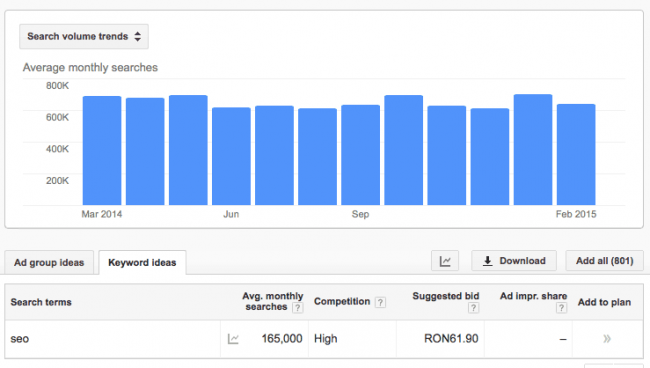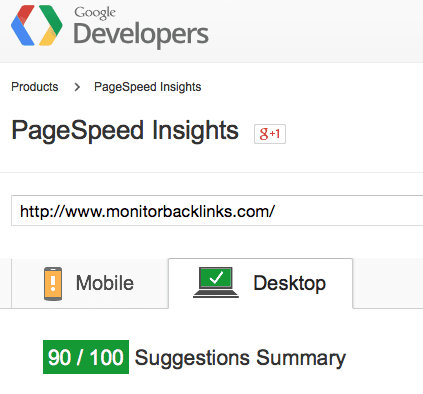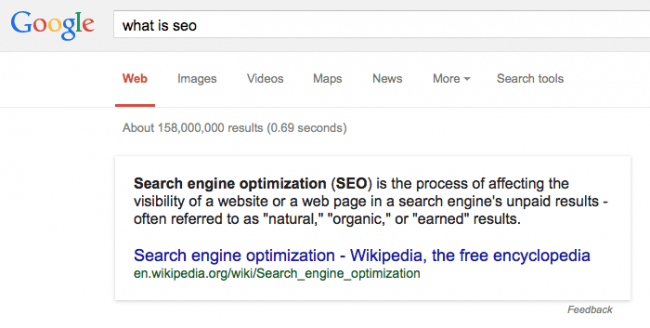GEOFENCING - TARGET MARKETING - 10 Steps to Be Successful at this Cutting Edge Tactic.
1. Find A Venue Where Your Target
Audience Will Have Specific Wants or
Needs
Stadiums,
airports, universities, and malls are examples of specific venues
that can be targeted in order to reach specific interest groups.
Stadiums provide a great opportunity to focus on specific short
engagement events with an audience defined by that event. They often
host fans from two specific cities or schools or fans of a specific
music genre that is heavy in one demographic. A band like One
Direction, for example, is likely to attract school-age female fans.
Use
these consumer characteristics to time and target your marketing. For
example, airports on weekdays are a great source of business
travelers looking for high-end restaurants, while weekends and Spring
Break bring more leisure visitors and families looking for more
casual dining options. Likewise, dance clubs and bars can benefit by
promoting 18 and over events targeted at universities whose student
bodies are largely between the ages of 18-21. These are just a few
examples of how venues define audiences that can be effectively
targeted.
2. Exclude Locations Where Your Target
Audience Will Not Be
Not
only can you define an area you wish to reach, you can carve out an
area you wish to exclude. Exclusion can be done by venue or one side
of the street or any area that could have been specifically targeted.
For
example, clubs and bars that might otherwise want to target
university students may exclude that same area during breaks or the
summer when most students are away.
Excluding
locations may also be a more cost-effective way to avoid the higher
ad rates of high demand target areas. Digital marketing agency
Mediative how lower-cost, broader area ad campaigns can
accomplish the same targeting goals by opting out of all areas but
your desired target location.
3. Define A Radius by Distance Or Time
Around Your Store Or An Area Of
Interest
Geo-fencing
allows marketers to set a perimeter around a physical location
in which ads can be delivered. For geo-fencing ads, they may
include creative messages acknowledging the user’s location or may
include location-based features such as a store locator.
For
example, a coffee shop can set a 1-mile perimeter around its store
and reach any user within that radius. Or, it could set a 3-mile
perimeter around a nearby office complex to reach users that may be
looking for somewhere to grab coffee before going into work. You can
also try geo-conquesting, which targets customers around a
competitor’s location.
Another
way to define a perimeter is not by distance, but by time. A company
named iGeolise developed a platform they call TravelTime, an API that
allows mobile apps and sites to search by time rather than distance.
This could be useful for a condo unit near downtown looking to
attract workers with very long commutes, or a restaurant targeting
hotel patrons within a 10-minute walking distance.
4.
Adjust Your Bid on Ads To Prioritize
Better Locations
One
concern with specific targeting is the loss in volume of audience.
Even if you have an otherworldly 10% click-through rate, that’s
just 10 click-throughs if only 100 people see your ad.
In
low performing locations, the business developed from those areas may
be outweighed by the campaign cost. By raising your bid for more
desirable target locations, you increase your exposure in that area,
while lowering your bid in other areas keeps your reach broad at a
justifiable cost. These adjustments are a way of optimizing ad
performance.
An
event planning company or marketer for a musician that is hosting a
concert in Chicago may use bid adjustments to prioritize Chicago, but
also reach, at a lower cost, Milwaukee, WI and Grand Rapids, MI, both
of which are driving distance
5.
Use Location-Specific Keywords for
Paid Search Ads
Geotargeting
doesn’t always mean you have to capture where someone is physically
located. Consumer intent is conveyed all the time by search queries,
and location is a commonly included term. Consumers often narrow
their own searches by adding in the name of a city or district.
For
example, “Austin gyms” or “coffee shops near Dupont Circle” or
“uptown restaurants” provide location intent that you can target.
Include location terms such as area code, ZIP code, neighborhood,
community name, nearby landmarks, popular venues, tourist
destinations, well known street names, local jargon and other
keywords that will help you get found when a consumer is searchingfor businesses around you.
6.
Predict Your Audience by Geography
Geography
can also be used to predict desirable demographics and information
about users in that area. Neighborhoods can often be delineated by
residents’ income bracket, age, ethnicity, education, and many
other demographics or interests. Politicians often draw district
boundaries into areas of common political constituencies that also
predict demographics or common values.
Knowing
your business’ target audience and matching it up with where they
live or work helps you find those who might be most interested in
your product or service. For example, a ticket broker might
want to advertise NCAA basketball tickets in the state of Kentucky
and might think of using Kentucky basketball in its messaging.
However, Louisville basketball would be preferable for any
advertising within 50 miles of the city on the Kentucky side of the
border and 70 miles into Indiana due to the strength of Louisville’s
fan base in those areas.
7.
Discover Location Intent by Search
History
Targeting
ads using search history allows marketers to deliver location
specific ads to consumers, even if the consumer’s tracked location
doesn’t match the physical location of where he or she was
searching.
For
example, a user searching for information on the Empire State
Building, Central Park, and Broadway tickets predicts a trip to New
York. A hotel in the area could use that search history data to
deliver a relevant and timely search related ad or message.
8.
Analyze Consumer Behavior and
Preference from Past Locations Visited
Location
history of a consumer provides a lot of information specific to that
person: where they like to shop, what they like to buy, how often
they make the trip, and even how they get there. Obtaining this
information gives great insight to marketers that enhances the
ability to target consumers and deliver relevant, responsive location
specific ads and information, even if the consumer is not currently
in that area.
For
example, a bagel shop might serve up a free coffee coupon to anyone
who’s visited a Starbucks location more than once within 10 blocks
of its shop. The customers may be from anywhere in the city,
but their location history allows the bagel shop to target those who
are likely to be in the area in the future.
It’s
important not only to target the right consumers, but to provide the
most relevant information to them. If you find the right user who
clicks on your ad, but the landing page for that ad isn’t
customized, that conversion could be lost. Offer different website
landing pages for each targeted ad that match the reason that user
was targeted.
Another
way to get the right people to the right landing page is through
geo-aware targeting. Your site or landing page can detect where the
user is when they click on a banner or visit your website.
For
example, if a user from a high-income neighborhood visits a car
dealer’s site or clicks on a paid search display ad, that consumer
may be directed to a landing page displaying a luxury vehicle, while
consumers located in a lower income area may be targeted with a deal
on an economy vehicle. The higher income consumers may be more
interested in deals such as cash off or lower interest rates whereas
those in lower income brackets may be more receptive to lower monthly
payments.
10.
Take Advantage of Geographic
Specific Events
Lastly,
geographic specific events, such as the weather or traditional local
holiday celebrations, can be used to target consumers. Some events
are known in advance, like St. Patrick’s Day in Boston. Others are
unexpected, like snow storms in Dallas.
Upon
forecast of a blizzard, a hardware store may target consumers with
content promoting snow shovels or snow blowers. The week before St.Patrick’s Day, a clothing store may promote its green colored or
festive attire. Either way, these events will spike demand for
particular items and are a great opportunity to boost sales.
In
summary, these are but a few of the examples of how geography plays
such an important part in creating customized and targeted marketing
campaigns. Consumers respond better to relevant marketing which means
that ROI of targeted campaigns will increase. Mobile consumers make
geography one of the best ways to target while technology and data
make doing so a real advantage to those who use it. Sometimes it
takes a little creativity, but it is worth the effort. Especially for
the business of local.
BONUS FACEBOOK AND INSTAGRAM QUICK FACTS
Targeting Customers within a Region
Here,
we’ve placed a pin in the East Village in Manhattan and set a
1-mile radius for the targeting — ensuring that everyone in this
geographical region will be part of the audience for the ad that
we’re going to run.
Our
ad will be shown to 710,000 people: that’s a lot. Better to narrow
that down a bit. To do that, we’re going to use some more targeting
around the age, gender, and type of person that we’re trying to
show our ad to.
Since
we’re trying to help people selling their homes, we should look forindicators that the people we’re showing our ad to are actually
likely to move.
Targeting Customers with a Region + Behavior & Demographic Targeting
In
order to get more specific with our audience, we set up our targeting
to focus on those people that Facebook says are interested in moving.
We narrow our age range slightly to exclude those too young to
(probably) be looking to sell their home, and also include some
demographic and behavioral targeting traits. We target those who are
“likely to move” and those within a range of incomes and networths that we like:
The
“likely to move” indicator is given to us based on Facebook data
about people it has deemed are in the early stage of leaving their
house. For net worth and income data, we’ve set up a fairly wide
bracket that will at least give us some understanding of the
financial situations of the customers we’re using this ad to
target.
This
combination of traits gives us a much more reasonable 2,800-person
audience. We can show an ad to virtually every single one of these
people with not that much spend.
Targeting with Geographic Exclusion
Say
our real estate marketing business really starts to blow up. We make
a few new hires and start to divide Manhattan up into regions, with
each new employee responsible for a new section. Each one is
responsible for marketing within their region. We can easily carve
out an “excluded” area within any local awareness region to, for
example, exclude a particular zip code that we’re not responsible
for from our ad’s targeting. That lets us save money by not
targeting customers that we don’t really want to be attracting:
You
can use multiple different exclusion zones if you have an extremely
particular region that you’re looking to target. The only caveat
here is that you have to make sure you’re not being too narrow with
your behavioral and demographic targeting. When you focus on too
small a region, the size of your audience can get so small that it
becomes practically impossible for Facebook to actually deliver your
advertisements.
Targeting by Geographical Behavior
If
you target a particular geographical region long enough, you will
probably notice that there is some ambiguity behind what it really
means to “target” a location.
Facebook
determines the locations of its users in a variety of ways: by data
collected from smartphones, by manual check-ins at different
locations, and by the places that users list in their profiles as
their current and home cities — to name a few.
That
means it is not always clear which kind of “location” you’re
going to be targeting with your local awareness ads:
- People who actually live in a particular region
- People who have recently visited a region
- People who are in a region on vacation or otherwise traveling
The
distinctions here can become quite urgent depending on the kind of
product you’re selling or the kind of customer you’re looking to
find. If you’re trying to find people who are interested in selling
their homes in the East Village, then you don’t want to target
people who are just in the East Village on their spring break or
while visiting family. If you’re trying to target high net worth
individuals on vacation in Montauk, New York because you believe
they’re ripe targets for ads about buying beachfront houses in
Montauk, then you don’t want to waste your ad spend showing ads to
locals.
Fortunately,
Facebook saves you the trouble of worrying about this by allowing you
to specify just what kind of “location” you’re trying to
target. You can choose between people simply in a location, people
who live in the location, people who were recently there, or people
traveling there.
Custom Targeting Lists
If
you’re running a lot of local awareness ads or have a very strong
idea of where your best customers come from, you will probably
develop a longer list of places that you want to target. Facebook
makes it easy to run more complex, custom ad campaigns on more
locations.
You
can, for instance, target multiple areas specifically by their zip
codes. Let’s say our real estate business explodes and goes
nationwide and we want to look for the cheapest places to buy homes
in America. We can look up a list of the zip codes with the cheapest
homes and enter them as our targeting criteria, giving us a
“geo-fence” that spans different communities and states:
If
you already
have a list of places where your high-value clientele lives or work,
you can upload that in text or spreadsheet form and insert it right
into Facebook. That way, you can automatically begin targeting in the
areas where you know your highest value customers live.
Combining
geographical regions with behavioral and demographic targeting in
this way can allow you to zero in on the high-value customers you
want to attract to your business no matter what you’re selling or
who you’re trying to find.
Use location-specific landing pages
If you have different landing pages on your website for each region that you serve, send customers to the landing page most relevant to their geographic areas. That way, they don't have to spend time searching for the information that's relevant to them.
Example
You're a real estate agent and your website has listings for apartments for sale throughout Florida. If a customer is searching for apartments in Miami, you'll want to send them to your landing page with Miami apartments, rather than Orlando apartments.
Use location extensions to highlight your business address
If it's important for your customers to know where your business is located, it can be helpful to add location extensions to your ads. Location extensions merge your business address and phone number seamlessly with your ad text.
If all of the businesses in your location extensions are in the U.S., you can target a radius around your location extensions to show ads to people located near your business. With bid multipliers, you can also set different bids for these areas.
Example
Let's say you own a bicycle repair shop in downtown Chicago. With location extensions, a customer near your store who searches for bicycle repair shops can see your ad, along with your full address and phone number -- and head your way with his flat tire.
** Bonus About advanced location options**
Location targeting based on household income is being automatically migrated from location targeting into demographic targeting. To make household income targeting changes or see your reports, go to the Demographics section of your Google Ads account.
Location options let you include or exclude people based on:
-
where they're likely to be physically located
-
the places they’ve shown interest in
By default, location targeting includes both physical locations and locations of interest, but advanced advertisers can use these options to limit their targeting to either one. This article goes over the advanced options for location targeting and location exclusion. Note that advanced location options only apply to ads on the Search and Display Networks.
where they're likely to be physically located
the places they’ve shown interest in











